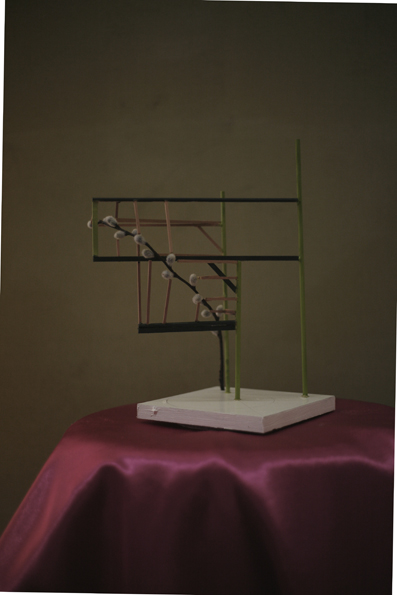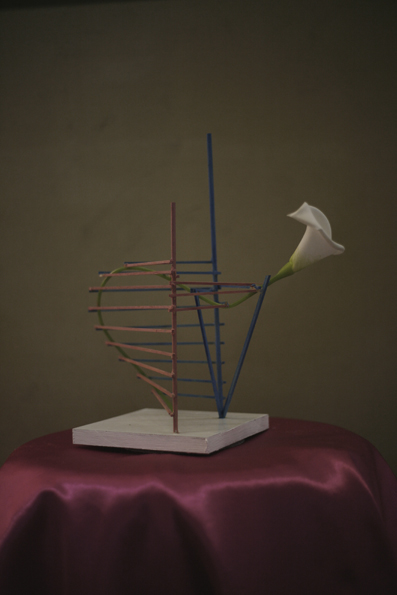Rationalising the Subjective -


(Originally From 'The Enthusiast' Film Catalogue)
“I find no basic conflict between those who appreciate the fine arts and those who respond to classic examples of the applied arts.
They are stirred by the same impulse, a desire for beauty”
Henry Dreyfus – Designing for People - 1955
We see today an increasing amount of news coverage and interest in the unraveling of the mind, exploring the foundations for consciousness and perception, which can be viewed as the latest technological update define universal truths. In the realm of aesthetic pleasure, visual beauty has been a device used to support systems of control, from religious ideologies to consumer culture. Understanding the reasons behind visual details that alter or control our perceptions has been a powerful skill to possess and functions as a way to shape an experience of reality.
In two seemingly unrelated areas of design, a pursuit to create aesthetic experiences governed by specific rules can be seen to aim for the quantification of visual beauty as an alluring goal, which can discuss past present and future ambitions to control perceptual experiences. We can look to an ancient artistic practice, and emerging ideas in neuroscience to probe at systems designed to hunt for the truth behind our experience of a beautiful reality.
A prescribed sense of beauty is a timeless factor of life. Having an 'aesthetic' quality has provided the animal kingdom with specific significance which governs behavior and forms part of the secret formulas for consciousness itself. Within the context of mankind's history, visual representations which provide a perceived pleasure have resulted in a rich and complex system of designed entities, religious, political, natural and manmade; what seems to be either easy on the eye, enthralling to the senses, or simply 'beautiful' continues to feed into our current contemporary total noise of visual information.
The ability to construct visually affective forms has had its roots with an artistic skill-set, a valuable power to imagine and create an emotive visual language. These practices have benefitted from technological advancements of the day, updating and expanding modes of representation. Today we see live in a world where the tools of creative output have been offered to any ‘user‘ who chooses to participate, as the heritage of the photograph has led to world of possibility for anyone to master. As we become swamped with a surface layer of photographic filters, easy to use editing, and ubiquitous self publishing, we can consider some earlier functions of aesthetic creation or systems which are emerging and can be seen to suggest the hidden structures of our designed world.
Dating back for over a thousand years, Ikebana has been the practice of the study and appreciation of an aesthetic design. Ikebana is the art of flower arranging - one of many cultural traditions found in the history, and present culture of Japan, and one which is often overshadowed by the prominent cultural heritage of the Japanese tea ceremony.
Ikebana developed from an inherent appreciation of nature, fundamental to the Buddhist tendencies which had reached Japan around 500-600 BC and the art form grew slowly from the appreciation of plant life, evolving into a subtle art of manipulation, geometry and performance. The evolution of Ikebana (from the Rikka style into different distinctive groupings) saw a cultural practise emerge that specific arrangements of stems and leaves performed a symbolic representation of the universe, by providing a visual balance between heaven, earth and man to reflect the harmony of the environment embedded in eastern philosophy.
From the1750’s onwards a cluster of schools emerged, each with its own nuanced version of the fundamental rules developed over the decades and centuries. Geometrically this ancient eastern practice shares some of the mathematics of other cultures, the squaring of the circle and the close resemblance to the golden ratio allow us to see this obscure practice as being in line with some of the fundamentals of human proportional appreciation (more recently seen as a key ingredient to the modular system of Le Corbusier) . As the practice of Ikebana developed, stricter rules surrounded the ratios of stem heights, flower combinations and the direction of plants, to form a set of designed formats or blueprints.
The actual creation of an Ikebana arrangement provides a different perspective on a rational outcome or endeavour. The act of constructing an arrangement as a designed object is only loosely defined as the use of natural materials rather than pre manufactured or fashioned parts welcomes a level of improvisation or adaptation. A level of contingency and flux is very much a part of a creative act, and become ingredients for the meditative and reflective aspects of ikebana as both performance and meditation. Therefore a physical act of aesthetic achievement is deemed beneficial, and it is worth noting that reports of Samurai using Ikebana to prepare for battle are not too dissimilar to reports of police in São Paulo in 2007.
Certainly, Ikebana contains a variety of aspects, offering a way to combine a rule based - aesthetic system and an improvisational performance, which seeks to unify man nature to produce a beautiful outcome. In todays technologically driven and contemporary global culture we can observe a very different form of interpreting the hidden forces which we are sure exist, beyond a spiritual or mythological heritage we can see a new frontier of explanation, definition and excitement.
In the past decade, new areas of research and implementation have emerged in the world of neuroscience, which could be seen to tap into similar values as those found in Ikebana. Although no apparent connections are instantly visible it is important to view the larger system of neuroscience as a practice which is motivated by a desire for self actualization - to activate all the capacities of the mind and body. I would argue that ikebana was in its early evolution was an early form of such desire, by oscillating between a variety of values and actions to help visualize an inner balance or goal. By looking to the inner workings of the brain it seems that we are continuing to define forms of aesthetic appreciation, yet unlike Ikebana the pursuit for the truths behind our appreciation is not imbued with a sense chance - instead with a continued need for definition, scientific research into our perceptions believes that we can rationalise even the most subjective aspects of our lives.
The field of Neuro-aesthetics looks at ‘various approaches that involve the study of art from the point of view of perceptual physiology or cognitive science’ and is arguably aiming to uncover the basis for aesthetic appreciation on a cellular level. Professor Semir Zeki, has gained a degree of publicity with his current research into the foundations of beauty, using experiments to seek out the areas in the brain which hold the key to certain aspects of this mode of perception. Whereas Ikebana operates as a practical art form, routed in both ritual and geometry, neuro-aesthetics is a probing theoretical discipline, yet both have a desire to define a form of truth found within visual qualities, and their reactions.
The ambition to decode the human perception of beauty on a neurological level is on the fringes of more conventional research into brain functioning yet operates as an interesting example of the kinds of questions and consequences that emerge at the frontier of cognitive research. A science fiction future for neuro-aesthetic research could be a grading or new criticality within the visual arts, however the practice of neuroaesthetics has perhaps been utilised by a similarly speculative relation, but with a far more obvious motivation.
The practice of neuro marketing has been gaining more attention in certain circles as well as the ongoing ethical discussion surrounding the erosion of free will in contemporary digital culture. Put simply, neuro marketing interprets neurological reactions to advertising stimuli in an effort to further understand the mind of the consumer and to re-engineer or tweak promotional material to perfect the design of a brand experience. This can be seen as the obvious act two for an industry, which is founded on research from psychology and psychoanalysis, and it is of no surprise that the leaps made in the imaging and interpretation of our minds thoughts and actions would result in a commercial application within the ‘dark arts’ of advertising.
One layer of neuromarketing is the fascinating or terrifying prospect of a design process, which is being tailored to work subconsciously. Due to an objective, financial motivation, this is a system which opertates with different outcomes to Ikebana yet can be seen to have a rigid format for design, albeit with contemporary, cultural and existing memes instead of cherry branches or chrysanthemums.
The rationale behind a physical and empirical embodiment of beauty or persuasion can also be viewed as moments where a technology and a sense of spirituality combine, in order to show some proof of concept, a statement of existence or to make sense of the world and its invisible forces. By considering the relationship that Ikebana and fringe neuroscience have to the formation of appealing and symbolic offerings, we can appreciate a determination to understand and utilise the foundations of visual pleasure as a method of status, power and control.
It is clear that with the world becoming a more complex place, the ability for science to provide a blueprint for an aesthetic experience could if achieved complicate things further. Whereas Ikebana operates on a subjective level with in built sets of rules, neuroaesthetics and neuro marketing offer a more objective outlook on creativity and its use value. What could the endgame be for the rationalising of our desires and aesthetic enjoyment, if we have an increasing amount of tools to aid a design process? The character portrayed in the short film ‘The Enthusiast, is an individual who has combined tools and rituals of a designed perfection, and we see him lost in a quest for happiness or total fulfillment. The outcome of this is ambiguous, although his pursuit is all about process, perhaps a reflection on what I find truly beautiful.


